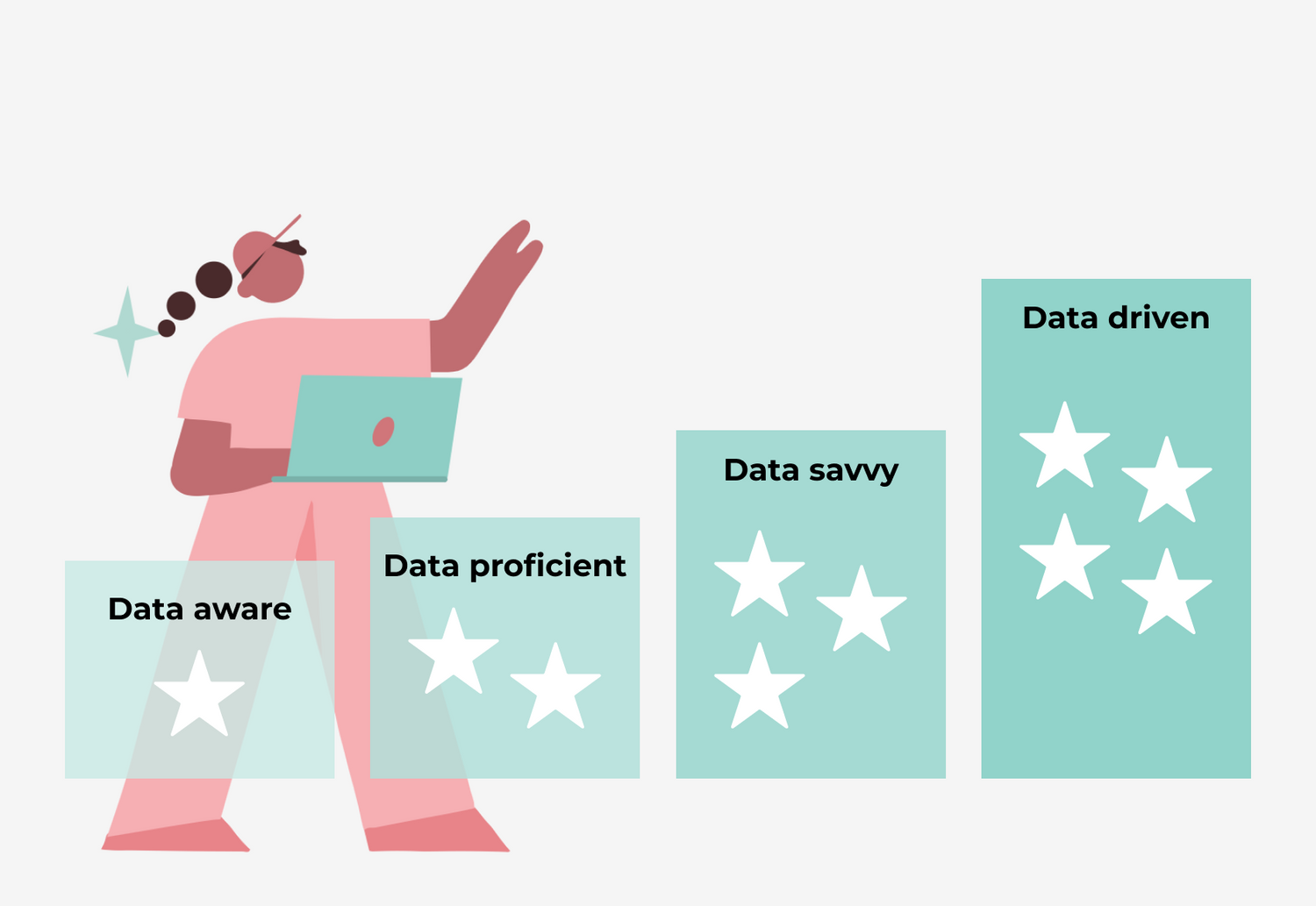As customer acquisition costs are skyrocketing due to digital ad price increases, D2C eCommerce companies need to be strong with the eCommerce data. Without data strategy and organisational maturity for data-driven business, D2C companies will struggle to have the required deep knowledge of consumer behaviour in D2C channels. Data maturity has a direct impact on profitability, IDC survey for 625 ecommerce executives in the United States, Canada, and the United Kingdom revealed that data-driven leaders' profits are 2.4x compared to data maturity lagging organisations [1].
Many companies who are moving from traditional retail-driven business to D2C eCommerce experience difficulties in understanding and using data to steer the business. Defining what metrics to gather, what metrics to use to steer the business, and how to collect and combine relevant data might be very challenging. It might be difficult even to create practical KPIs across different functions of the organization. D2C companies should collect and base decisions on real-time consumer insights, not only waiting for feedback from the retail channel. These consumer insights can help a company answer consumer needs directly and maximize consumer lifetime value for the company.
Therefore, D2C eCommerce strategy and recognising a company's data maturity level can help to concentrate on the right actions to transform from lower data maturity levels to higher maturity levels and increase business profitability.
How do I know my data maturity level?
Data maturity models can help companies to identify their own data maturity. Data maturity models are frameworks that D2C companies can use to ensure that they are making the most out of the data that they have and recognise the most important next steps to take. There are many models but one most common one is The Dell Data Maturity model which describes 4 levels of data maturity.

Figure 1. Dell Data Maturity Model by CIO.com[2].
Dell data maturity model breaks down what D2C company must be doing to reach each of the four levels. Dell data maturity model can be adapted to D2C business as follows:
1. Data Aware: To reach the entry-level of the Dell data maturity model a business will have to create reports manually. Being aware of data is about as basic as it can be, employees have varying skills in reading and acting on the basis of the data. They might not understand basic D2C metrics and be able to analyse root causes in their own area. They might not trust the data and therefore decisions are not based on the data. Data is not necessarily available in real-time and KPI’s target might not be set at all.
2. Data Proficient: At this stage, the company has automated some data processing and has a clearer understanding of what data can do. However, employee data skills may still vary, preventing the company from effectively acting on the data. KPIs have been defined, but they are mainly used to track past performance. There is no formal, company-wide reporting system, and each department or team uses its own tools for data analysis.
3. Data Savvy: The company becomes more self-aware of its data and starts using it to make impactful business decisions. While employee data skills may still vary, the company has defined KPIs and other key metrics to track. It has also started building widely accessible dashboards and reports to share data internally and enable data-driven decision making. Integrated organizational reporting practices are in place, and data is available to all employees. The company uses data to plan and predict future business outcomes and has developed analytics capabilities. It may also be enriching its internal data with external data sources to add value.
4. Data Driven: At this highest level, data is at the center of every decision made in the company. The company uses machine learning (ML) and artificial intelligence (AI) to optimize business operations and predict future outcomes. Every aspect of the business is driven by data.
How should I get started?
Some beginner D2C companies might find themselves having difficulties positioning themselves even on the first maturity level, having no tools or skills in place to begin a data-driven business journey.
The recommended actions to start the process are
1. Build a single source of truth for D2C data: Combine business data sources to a single data-warehouse to enable aggregated analyses of sales, products, customers and marketing actions. The same IDC survey [1] revealed also that 76% of data maturity leader organisations have a single source of truth for data, compared with 3% of lagging organisations.
2. Use standard reports & metrics to teach the data for the organisation: Adopt and use at minimum standard metrics for D2C profitability, and sales & marketing funnel follow-up before moving to CLV, ROAS or CAC analyses.
3. Provide easy access to data: Organisation should have wide access to key metrics, dashboards and reports, enabling data usage outside its own department and maximizing actions based on data.
Woolman’s Ellis data platform helps you to get started with data-driven D2C.
Ellis has been developed by Woolman, Largest Shopify Plus Agency in Europe.
Sources:

